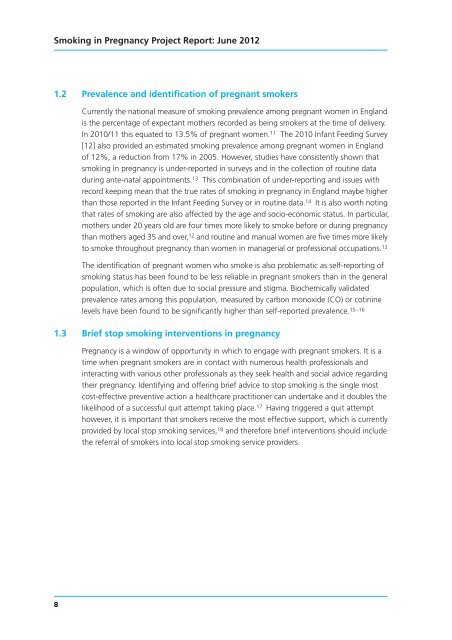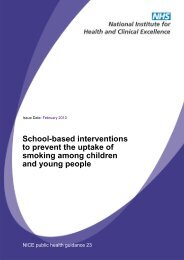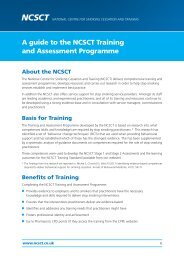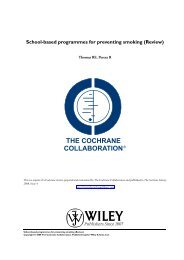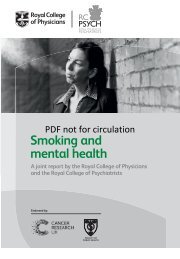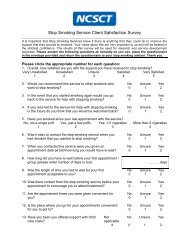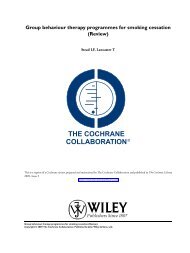published
published
published
Create successful ePaper yourself
Turn your PDF publications into a flip-book with our unique Google optimized e-Paper software.
Smoking in Pregnancy Project Report: June 2012<br />
1.2 Prevalence and identification of pregnant smokers<br />
Currently the national measure of smoking prevalence among pregnant women in England<br />
is the percentage of expectant mothers recorded as being smokers at the time of delivery.<br />
In 2010/11 this equated to 13.5% of pregnant women. 11 The 2010 Infant Feeding Survey<br />
[12] also provided an estimated smoking prevalence among pregnant women in England<br />
of 12%, a reduction from 17% in 2005. However, studies have consistently shown that<br />
smoking in pregnancy is under-reported in surveys and in the collection of routine data<br />
during ante-natal appointments. 13 This combination of under-reporting and issues with<br />
record keeping mean that the true rates of smoking in pregnancy in England maybe higher<br />
than those reported in the Infant Feeding Survey or in routine data. 14 It is also worth noting<br />
that rates of smoking are also affected by the age and socio-economic status. In particular,<br />
mothers under 20 years old are four times more likely to smoke before or during pregnancy<br />
than mothers aged 35 and over, 12 and routine and manual women are five times more likely<br />
to smoke throughout pregnancy than women in managerial or professional occupations. 12<br />
The identification of pregnant women who smoke is also problematic as self-reporting of<br />
smoking status has been found to be less reliable in pregnant smokers than in the general<br />
population, which is often due to social pressure and stigma. Biochemically validated<br />
prevalence rates among this population, measured by carbon monoxide (CO) or cotinine<br />
levels have been found to be significantly higher than self-reported prevalence. 15–16<br />
1.3 Brief stop smoking interventions in pregnancy<br />
Pregnancy is a window of opportunity in which to engage with pregnant smokers. It is a<br />
time when pregnant smokers are in contact with numerous health professionals and<br />
interacting with various other professionals as they seek health and social advice regarding<br />
their pregnancy. Identifying and offering brief advice to stop smoking is the single most<br />
cost-effective preventive action a healthcare practitioner can undertake and it doubles the<br />
likelihood of a successful quit attempt taking place. 17 Having triggered a quit attempt<br />
however, it is important that smokers receive the most effective support, which is currently<br />
provided by local stop smoking services, 18 and therefore brief interventions should include<br />
the referral of smokers into local stop smoking service providers.<br />
8


